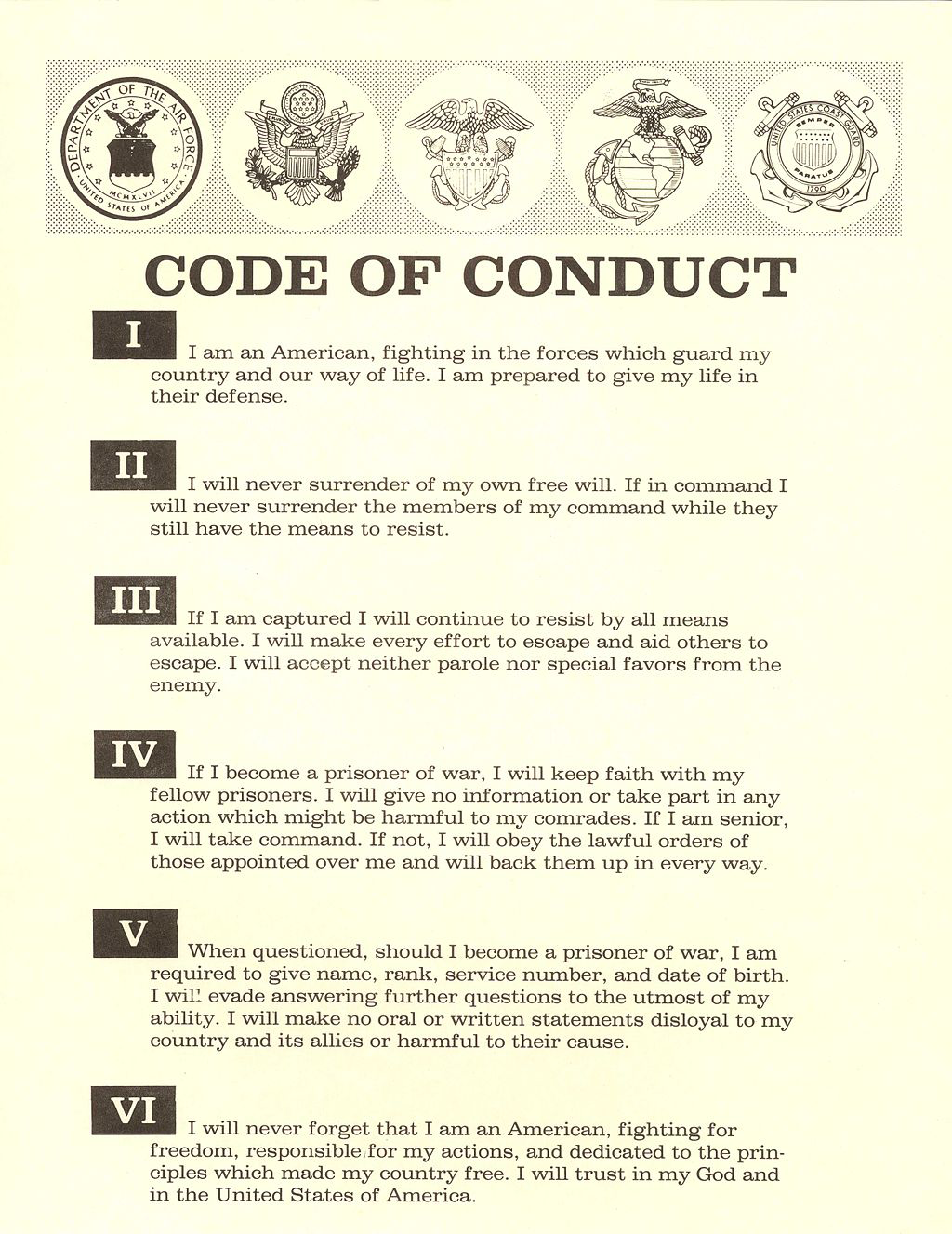The United States Military Code of Conduct
All service members receive training in the U.S. military's Code of Conduct at various times in their careers.
The Code of Conduct, which was introduced by President Eisenhower in 1955, is based on time-honored concepts and traditions dating back to the American Revolution.
The six articles outline the obligations and responsibilities of U.S. service members in harm's way.
ARTICLE I:
I am an American, fighting in the forces which guard my country and our way of life. I am prepared to give my life in their defense.
ARTICLE II:
I will never surrender of my own free will. If in command, I will never surrender the members of my command while they still have the means to resist.
ARTICLE III:
If I am captured I will continue to resist by all means available. I will make every effort to escape and to aid others to escape. I will accept neither parole nor special favors from the enemy.
ARTICLE IV:
If I become a prisoner of war, I will keep faith with my fellow prisoners. I will give no information nor take part in any action which might be harmfull to my comrades. If I am senior, I will take command. If not, I will obey lawful orders of those appointed over me and will back them in every way.
ARTICLE V:
When questioned, should I become a prisoner of war, I am required to give name, rank, service number, and date of birth. I will evade answering further questions to the utmost of my ability. I will make no oral or written statements disloyal to my country or its allies or harmful to their cause.
ARTICLE VI:
I will never forget that I am an American, fighting for freedom, responsible for my actions, and dedicated to the principles which made my country free. I will trust in my God and in the United States of America.


